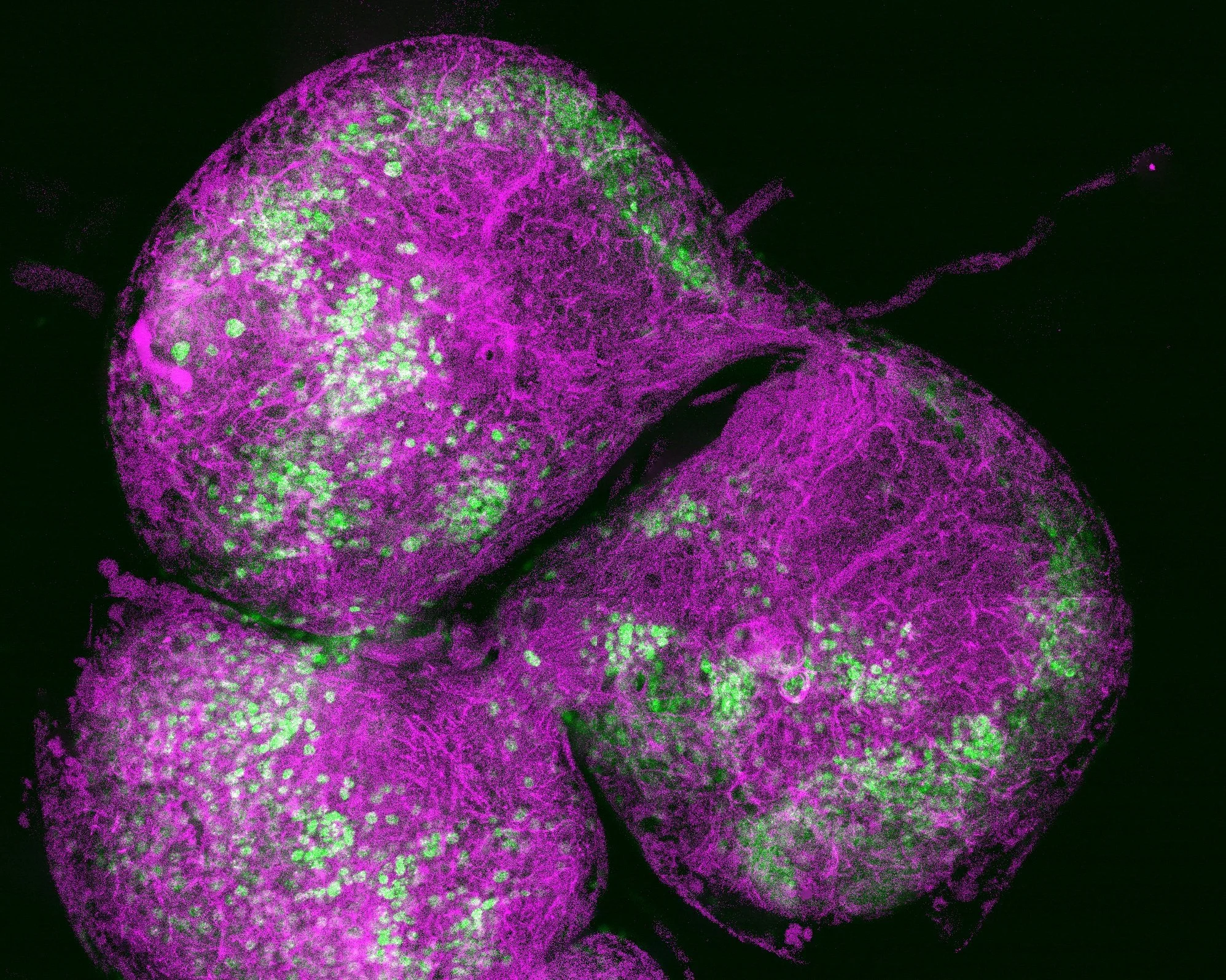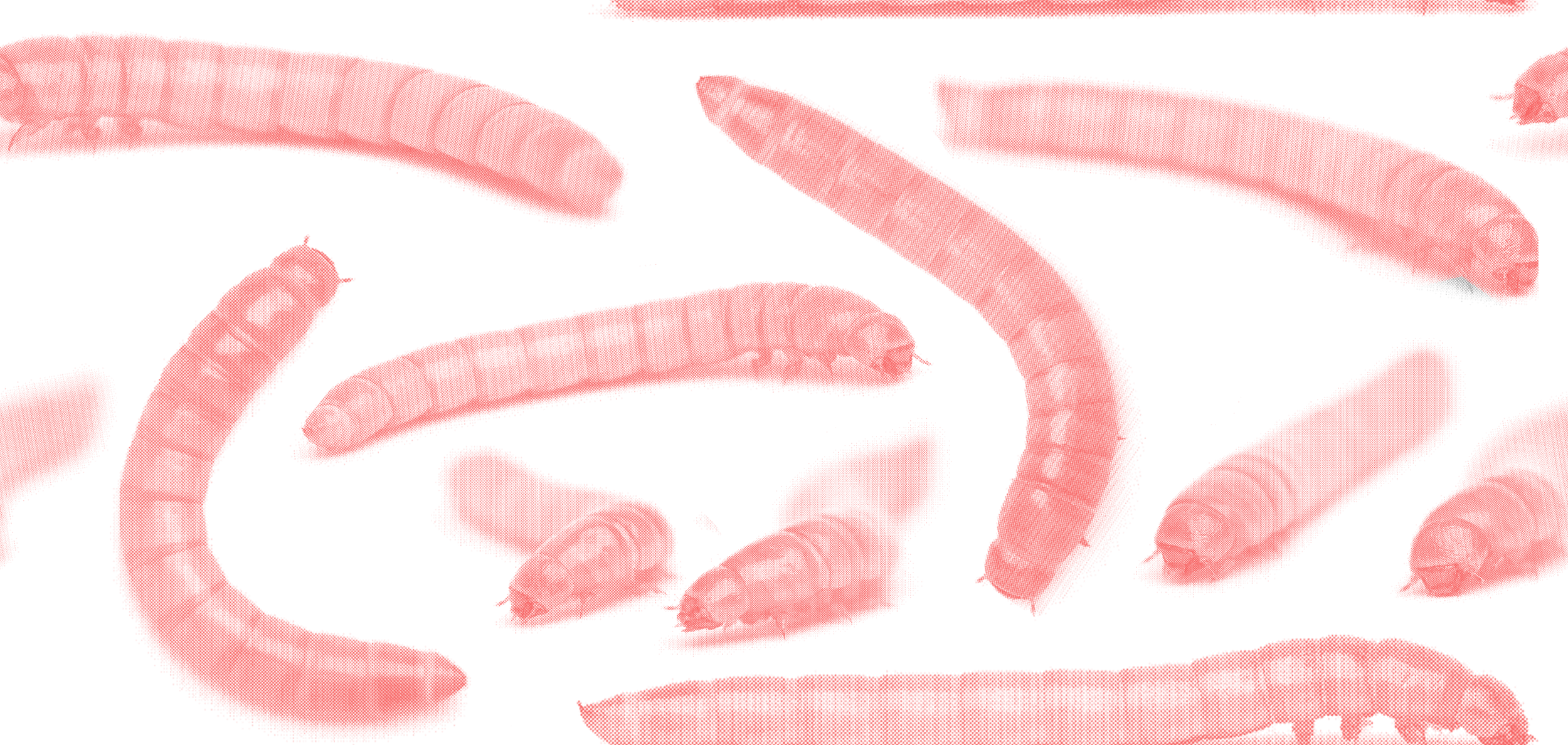
Featured Publications
Insect Welfare
Barrett M, Miranda C, Veloso IT, Flint C, Perl CD, Martinez A, Fischer B, Tomberlin JK. Grinding as a slaughter method for farmed black soldier fly (Hermetia illucens) larvae: Empirically-supported recommendations for more instantaneous and humane practice. Animal Welfare. https://doi.org/10.1017/awf.2024.10
Rowe E, Robles López KY, Robinson KM, Baudier KM, Barrett M. Farmed Cricket (Acheta domesticus, Gryllus assimilis, and Gryllodes sigillatus; Orthoptera) Welfare Considerations: Recommendations for Improving Global Practice. Journal of Insects as Food and Feed. https://doi.org/10.1163/23524588-00001087
Barrett M, Godfrey RK, Schnell A, Fischer B. (2023). Farmed Yellow Mealworm (Tenebrio molitor; Coleoptera: Tenebrionidae) Welfare: Species-Specific Recommendations for a Global Industry. Journal of Insects as Food and Feed. https://doi.org/10.1163/23524588-20230104
Barrett M, Adcock SJJ. (2023). A robust field of insect welfare science: An integral piece of growing IAFF industry success. Journal of Insects as Food and Feed. https://doi.org/10.1163/23524588-20230126
Crump A, Gibbons M, Barrett M, Birch J, Chittka L. (2023). Is it time for insect researchers to consider their subjects’ welfare? PLoS Biology. https://doi.org/10.1371/journal.pbio.3002138
Barrett M, Fischer B. (2023). Challenges in farmed insect welfare: Beyond the question of sentience. Animal Welfare. https://doi.org/10.1017/awf.2022.5
Barrett M, Fischer B, Buchmann S. (2023). Informing policy and practice on insect pollinator declines: Tensions between conservation and animal welfare. Frontiers in Ecology and Evolution. https://doi.org/10.3389/fevo.2022.1071251
Barrett M, Chia SY, Fischer B, Tomberlin JK. (2022). Farmed Black Soldier Fly, Hermetia illucens (Diptera: Stratiomyidae), Welfare Considerations: A Model for the Insects as Food and Feed Industry. Journal of Insects as Food and Feed. https://doi.org/10.3920/JIFF2022.0041
Neuroscience
Gibbons M, Crump A, Barrett M, Sarlak S, Birch J, Chittka L. (2022). Can insects feel pain? A review of the neural and behavioral evidence. Advances in Insect Physiology. https://doi.org/10.1016/bs.aiip.2022.10.001
O’Donnell S, Bulova S, Barrett M. (2022). Brain plasticity indicates key cognitive demands in an animal society: caste comparisons in dampwood termites. Insectes Sociaux. https://doi.org/10.1007/s00040-022-00873-5
Barrett M, Godfrey RK, Sterner EJ, Waddell EA. (2022). Impacts of development and adult sex on brain cell numbers in the Black Soldier Fly, Hermetia illucens L. (Diptera: Stratiomyidae). Arthropod Structure and Development. https://doi.org/10.1016/j.asd.2022.101174
Baudier K, Bennett M, Barrett M, Cossio F, O’Donnell S, Fewell J, Harrison J, Pavlic T. (2022). Soldier neural architecture is flexibly modality-specialized but poorly predicted by repertoire size in the stingless bee Tetragonisca angustula. Journal of Comparative Neurology. https://doi.org/10.1002/cne.25273
Caponera V, Aviles L, Barrett M, O’Donnell S. (2021). Behavioral attributes of social groups determine the strength and direction of selection on neural investment. Frontiers in Ecology and Evolution. https://doi.org/10.3389/fevo.2021.733228
O’Donnell S, Bulova S, Barrett M. (2021). Experience-expectant brain plasticity corresponds to caste-specific abiotic challenges in dampwood termites (Zootermopsis angusticollis and Z. nevadensis). Science of Nature. https://doi.org/10.1007/s00114-021-01763-9
Barrett M, Schneider S, Sachdeva P, Gomez A, Buchmann S, O’Donnell S. (2021). Neuroanatomical differentiation associated with alternative reproductive tactics in male arid land bees, Centris pallida and Amegilla dawsoni. Journal of Comparative Physiology A. https://doi.org/10.1007/s00359-021-01492-4
O’Donnell S, Bulova S, DeLeon S, Barrett M, Fiocca K. (2019). Brain structure differences between solitary and social wasp species are independent of body size allometry. Journal of Comparative Physiology A. https://doi.org/10.1007/s00359-019-01374-w
O’Donnell S, Bulova S, Barrett M, von Beeren C. (2018). Brain investment under colony-level selection: soldier specialization in Eciton army ants (Formicidae: Dorylinae). BMC Zoology. https://doi.org/10.1186/s40850-018-0028-3
O'Donnell S, Bulova S, Barrett M, Fiocca K. (2017). Size constraints and sensory adaptation in brain architecture (paper wasps - Vespidae: Epiponini). Biological Journal of the Linnean Society. https://doi.org/10.1093/biolinnean/blx150
O'Donnell S, Bulova S, DeLeon S, Barrett M, Fiocca K. (2017). Caste differences in the mushroom bodies of swarm-founding paper wasps: implications for brain plasticity and brain evolution (Vespidae, Epiponini). Behavioral Ecology and Sociobiology. https://doi.org/10.1007/s00265-017-2344-y
Thermal Physiology
Barrett M, Tigreros N, Davidowitz G, O’Donnell S. (2023). Impact of body size, but not age or acclimation time, on critical thermal maxima in female Centris pallida bees (Hymenoptera: Apidae). Ecological Entomology. https://doi.org/10.1111/een.13272
Barrett M, O’Donnell S. (2023). Individual reflectance of solar radiation confers a thermoregulatory benefit to dimorphic male bees (Centris pallida) using distinct microclimates. PLoS ONE. https://doi.org/10.1371/journal.pone.0271250
Other
Cuff JP, Barrett M, Gray H, Fox C, Watt A, Aimé E. (2024). The case for open research in entomology: Reducing harm, refining reproducibility, and advancing insect science. Agricultural and Forest Entomology. https://doi.org/10.1111/afe.12617
Barrett M, Johnson MG. (2022). Centris pallida (Hymenoptera: Apidae) male body size decreases across five decades. Ecological Entomology. https://doi.org/10.1111/een.13210
Barrett M, Kang A, Gomez A, Kainth D, O’Donnell S. (2021). Nest architecture, prey, and body size in Isodontia auripes (Fernald) at two sites in New York (Hymenoptera: Sphecidae). Journal of the Kansas Entomological Society. https://doi.org/10.2317/0022-8567-94.3.199
Barrett M. (2021). The first case of gynandromorphy in Centris pallida (Hymenoptera: Apidae: Centridini). Journal of Melittology. https://doi.org/10.17161/jom.i104.13782
Barrett M, McNair C, Caponera V, O’Donnell S, Marenda D. (2020). Potential for use of erythritol as a socially-transferrable ingested insecticide for ants (Hymenoptera: Formicidae). Journal of Economic Entomology. https://doi.org/10.1093/jee/toaa019
Barrett M, Fiocca K, Waddell E, McNair C, O’Donnell S, Marenda D. (2019). Larval mannitol diets increase mortality, prolong development, and decrease adult body sizes in fruit flies (Drosophila melanogaster). Biology Open. https://doi.org/10.1242/bio047084
Fiocca K, Barrett M, Waddell E, Vivieros J, McNair C, O’Donnell S, Marenda D. (2019). Mannitol ingestion causes concentration-dependent, sex-biased mortality in Drosophila melanogaster. PLoS One. https://doi.org/10.1371/journal.pone.0213760
Caponera V, Barrett M, O’Donnell S, Marenda D. (2019). Erythritol causes concentration-dependent mortality in the Eastern subterranean termite (Blattodea: Rhinotermitidae). Journal of Economic Entomology. https://doi.org/10.1093/jee/toz260
Ethos
Barrett M, Fischer B (2023). Introducing ‘Ethos’: A regular forum for interdisciplinary conversations about ethics in entomology. American Entomologist, 69(1): 40-44.
Barrett M, Fischer B (2023). Should we add them? Asking better questions about authorship. American Entomologist, 69(2): 47-51.
Barrett M, Fischer B (2023). Don’t lose the louse: Articulating our values in conservation. American Entomologist, 69(3): 38-41.
Fischer B, Barrett M (2023). Between wonder and warfare: The case of the spotted lanternfly. American Entomologist, 69(4): 46-49.








